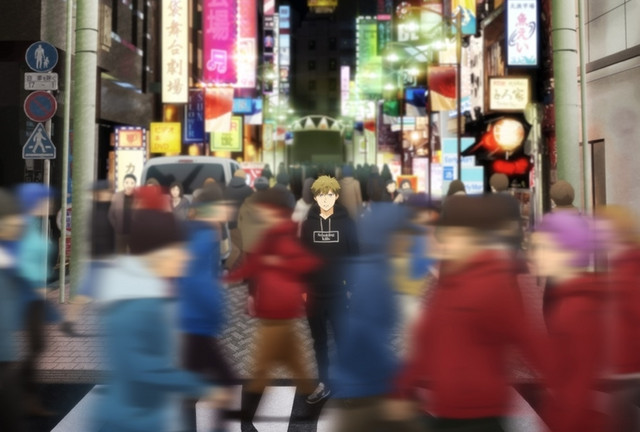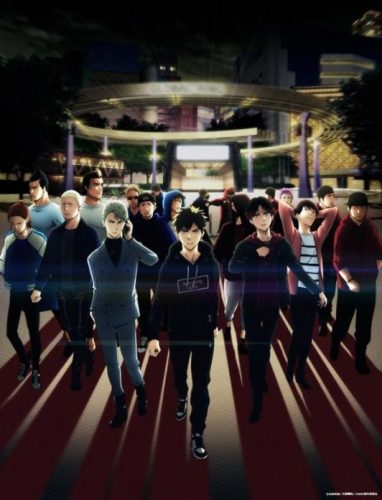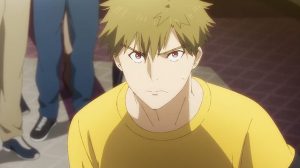
Ikebukuro West Gate Park (or IWGP for short, and no, it doesn’t stand for New Japan Pro Wrestling) was initially set to premiere in July 2020, but was delayed until October due to COVID-19. Based on the novel series by Ira Ishida (who also wrote Akihabara@DEEP), Ikebukuro West Gate Park takes place in Ikebukuro where many youth gangs are at war over territory and the only one they can depend on to make peace is Makoto Majima, who has a knack for helping people. However, when his girlfriend is brutally murdered, he is emotionally compromised and not only does he have to maintain order, but solve her murder.
The franchise has had a couple of manga adaptations and there was actually a TV drama adaptation that was broadcasted twenty years ago—the novel series was in publication from 1998-2010! The TV series casted some of Japan’s biggest celebrities around that time such as Ken Watanabe and Koyuki (both of them would make their international debut in The Last Samurai), Ai Kato (from Morning Musume, one of Japan’s biggest idol groups at that time), and Tomoya Nagase. Despite the novel series ending its serialization ten years ago, it’s still popular in Japan to the point that it’s FINALLY getting its long overdue anime. So, allow us to tell you why you should be pumped for IWGP!
It Addresses Problems With Japan’s Modern Youth
In case you weren’t aware, Japan’s media was showing a lot of concern in regards to the youth crime between the mid-1990s and the early-2000s, and IWGP was a response to that. To put this into context, while Makoto—the main character—is 20 in this series, you sort of have to put into context what it meant to be a 20-year-old in 1998, when the original novel first debuted.
In case some of you didn’t know, between the mid-1970s and the start of the 1990s, Japan had a booming economy to the point that it was a very, very, very close second to the US and the US felt threatened by Japan’s rising dominance, most especially in the auto industry. Lifetime employment was guaranteed and people were spending money like water. Then, when the 90s started, Japan went into a recession along the lines of what the US had in 2008, but was stuck there for the rest of the decade. As a result, Japan’s Generation-X didn’t have the same economic opportunities and benefits as their parents, and difficulties in permanent employment opportunities made some resort to being involved in gangs, as it is portrayed in IWGP’s source novel and dramas.
Others in Japanese society blame the rise in youth crime around the time the novel series debuted on “yutori” education, in which class hours were reduced in Japanese schools (which has been in practice for the last 30 years) so as to make schools pressure-free. There has been some statistical data that shows that yutori-style has decreased academic performance, and that working class children will have difficulties getting into higher education and/or getting a good job, and many feel that IWGP is a good way to understand how yutori education has affected the nation’s youth.
An Accurate Portrayal of Modern Ikebukuro
If you’ve seen Durarara!!, then you’ve got a pretty accurate portrayal of Ikebukuro (most especially the East Exit side), one of Tokyo’s trendy districts, in that series. As indicated in the title, fans are going to be treated to Ikebukuro in IWGP, but through a different and more modern lens. As opposed to the East Exit of Ikebukuro, the story is going to take place in the West Exit of Ikebukuro Station. As presented in the trailer, there are two notable landmarks of the West Exit you can immediately recognize if you’ve ever been there. One feature is the owl-shaped bushes, and the other is the recently constructed Global Ring outdoor concert venue, indicating that the anime is going to take place in modern day Ikebukuro and not within the time that the novel debuted (since that outdoor concert venue didn’t open until earlier in 2020).
What makes the West Exit an interesting setting is that it is where you’ll find most of the bars, love hotels, and semi-legal sex services. Considering the underworld nature of IWGP, the West Exit red light district is the perfect place to portray this world of gangs and mischief!
Good Mix of Dark Drama, Action, and Comedy
If you’ve read the novels or manga adaptations or seen the live action drama, then you have already had a taste of what’s in store for this upcoming anime version. What has made IWGP an enduring story for the last twenty years is its outstanding ability to blend drama, action, and comedy. When you get to see the nature of its cast as they are barely becoming adults, these qualities give IWGP its unique identity. The characters and their antics truly demonstrate what it means to be young and dumb, and how you can (or in some cases, can’t) learn from the stupid things you might do.
Considering it deals with a bit of gang warfare (though not to the severity of The Warriors or West Side Stories), expect a lot of brutal action and drama as well, especially as it relates to Makoto’s predicament.
Final Thoughts

If you’re looking for something funny and insightful, we promise you that IWGP is the anime you should be pumped for! While there are some aspects of Japanese youth culture that are portrayed in the original source material that can be considered outdated as it relates to the original novel during the time of its debut, we’re positive those in charge of the anime will find ways to make the story work for modern audiences. In addition, we’re hoping once COVID-19 blows over, hopefully some of you readers can come to Japan and visit the West Exit side of Ikebukuro station...but just stay out of trouble… For those of you who have had exposure to the novels, manga, or live action series, are you looking forward to the anime version? If so, share your thoughts in the comments!
Recommended Post


